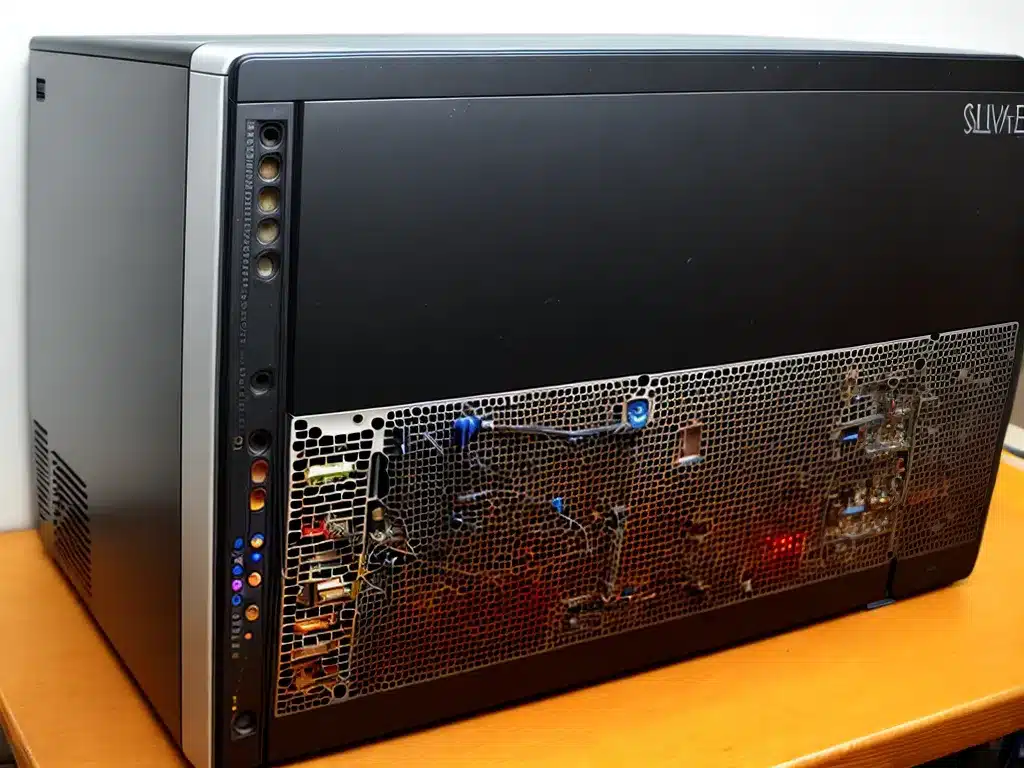
Identify The Root Cause Of The Slowness
When an old computer starts to slow down, it can be frustrating trying to pinpoint the exact cause. Here are some of the most common culprits behind an aging computer’s poor performance:
Too Many Startup Programs
Over time, your computer accumulates startup programs that load every time you boot up your machine. Each additional program uses up valuable memory and processor resources, slowing everything down.
To fix this, open the Task Manager and review the Startup tab. Disable any unnecessary programs so they won’t load automatically at startup. This frees up system resources for your everyday tasks.
Insufficient RAM
Random access memory (RAM) is vital for multitasking and running demanding programs. If you don’t have enough, your computer will swap memory to the hard drive which is much slower.
Consider upgrading your RAM if you have less than 4GB. This is inexpensive and can provide a noticeable speed boost.
Fragmented Hard Drive
As you install and delete programs over time, your hard drive becomes fragmented. Data becomes scattered across different locations on the physical disk, forcing the read/write heads to constantly search around.
Run the built-in Disk Defragmenter utility to consolidate and optimize data placement. This helps your hard drive access files and programs much faster.
Give Software A Speed Boost
You can optimize software for better performance without spending any money. Here are some effective techniques:
Disable Visual Effects
The visual effects and animations in Windows are resource intensive. Disabling them will remove some “eye candy” but will free up processor cycles for actual work.
Go to System > Advanced System Settings > Performance Settings and choose Adjust for best performance. This turns off unnecessary visual effects.
Uninstall Or Disable Unnecessary Apps
Your computer probably has pre-installed software that you never use. Uninstall or disable these programs to reduce startup times and system resource usage.
Focus on removing bloatware that came with your PC. You can usually safely disable or remove things like media apps, trial software, system utilities etc.
Update Drivers
Device drivers allow the operating system to communicate with hardware like printers, GPUs and wifi chips. Over time, bugs and inefficiencies creep in.
Updating to the latest drivers improves stability and optimizes performance. Nvidia and AMD regularly release improved graphics drivers that can boost FPS in games.
Give It A Deep Clean
A deep clean of the hardware helps eliminate slowdowns caused by technical issues. Here are some tips:
Open Up And Clean Out Dust
Dust buildup in a computer’s fans and heat sinks forces the system to throttle to avoid overheating. This slows everything down.
Use a compressed air duster to thoroughly clean out vents, fans and components. Be sure to hold fans in place when blowing air at them.
Check For Faulty Hardware
Bad RAM, failing hard drives and other faulty components can cripple a computer. Scan for errors using utilities like Windows Memory Diagnostic and Check Disk.
Consider replacing very old hardware that is giving warning signs like overheating, blue screens, odd noises, etc.
Reapply Thermal Paste
The thermal paste between a CPU and its cooler can dry out over time, reducing heat dissipation. This causes the CPU to throttle its speed to avoid overheating.
Clean off old thermal paste and reapply high quality paste like Arctic Silver. Ensure the heatsink makes full contact for maximum heat transfer.
Perform A Fresh Reinstall
If all else fails, nothing revives an old computer like a fresh reinstall of the operating system. This wipes the slate clean, removing years of accumulated junk.
Back Up Important Data
First, backup any important personal files and data you want to keep. Copy them to an external hard drive or cloud storage.
Wipe And Clean Install Windows
Boot into the Windows install media, delete all existing partitions to wipe the drive and perform a clean install of the OS. Avoid bloatware by declining any trial software during installation.
Reinstall Apps And Restore Data
Once Windows is setup, download a modern web browser, update drivers and reinstall only the applications you need. Then restore personal files from your backup.
The computer will feel like new again, with minimal bloatware slowing things down!
Final Thoughts
Reviving an aging computer can seem daunting, but following these tips can extend its lifetime at little or no cost. The key steps are identifying performance bottlenecks, optimizing software, cleaning internal components, and refreshing the operating system. With some targeted tweaks and elbow grease, you can keep that old PC running smoothly for years to come!












